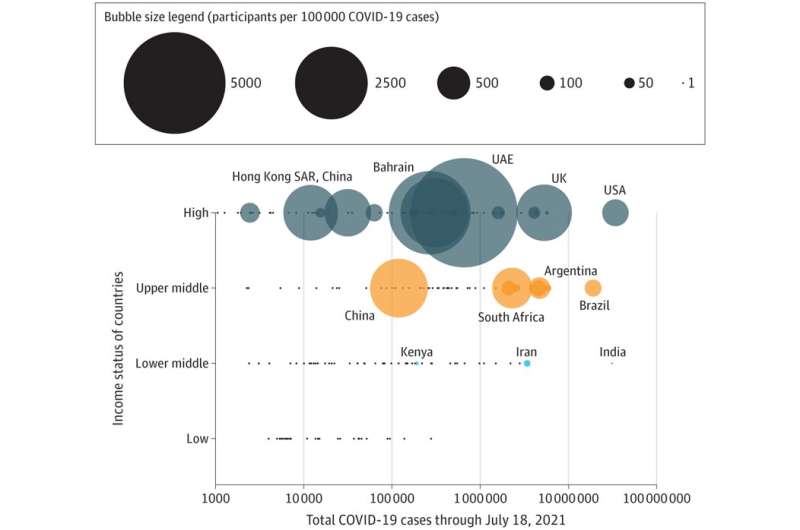COVID-19 clinical trials disproportionately run out of high-income countries

New research has shown that COVID-19 clinical trials are being disproportionately run out of high-income countries.
Published in Jama Network Open and led by researchers from the Doherty Institute and The George Institute, the study found the majority of randomized clinical trials for COVID-19 are being performed in high-income countries, clearly misrepresenting the global burden of the disease.
Professor Steven Tong, a Royal Melbourne Hospital infectious diseases clinician, co-lead of clinical research at the Doherty Institute, Principal Investigator of the AustralaSian COVID-19 Trial (ASCOT) and senior author on the paper, said the inequality could bring into doubt the validity and generalisability of these trials results.
"A treatment that works in an intensive care unit in the United States is not necessarily going to work in low and middle income countries like India, where substantial differences in healthcare capacity and other population factors exist," said Professor Tong.
"It brings into question how much these results can be applied to low and middle income countries."
Of the 295,845 participants who were enrolled in a randomized clinical trial, 84 percent were recruited from high-income countries.
What's more, of the 16 percent who were not from high income countries, none were from low income countries, with these participants either from lower middle or upper middle income countries.
This is in stark contrast to where the burden of disease for COVID-19 fell, with 58% of reported cases from low and middle income countries up to mid 2021.
Professor Bala Venkatesh from The George Institute and on the international trial steering committee of ASCOT, said that despite a huge COVID-19 disease burden and resource limitations, India has made a major contribution to COVID-19 research.
"COVID-19 has amplified the inequalities in global health and this clearly extends to who leads and who participates in randomized clinical trials," Professor Tong said.
"We need to now look at prioritizing research that is relevant to low and middle income countries, and building research infrastructure to support the conduct of such trials."
More information: Mahesh Ramanan et al, Geographical Representation of Low- and Middle-Income Countries in Randomized Clinical Trials for COVID-19, JAMA Network Open (2022). DOI: 10.1001/jamanetworkopen.2022.0444



















